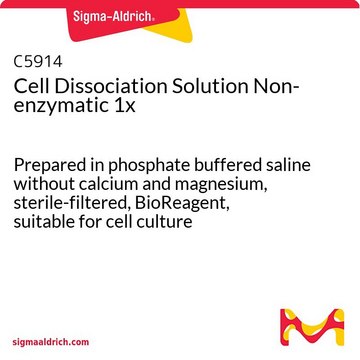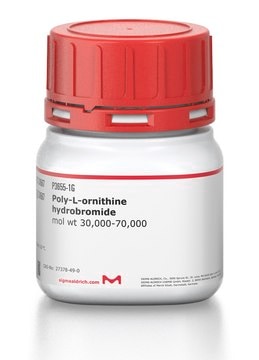SCR006
Accumax™Cell Counting Solution in DPBS Sterile-filtered Cell Culture Tested
A cell detachment solution of proteolytic, collagenolytic & DNAse enzymes. The reagent is useful for creating single cell suspensions from clumped cell cultures for accurate cell counting, detachment of cells from primary tissue.
Synonym(s):
Accumax Cell Solution, Cell Counting Solution
About This Item
Recommended Products
Quality Level
form
liquid
manufacturer/tradename
Chemicon®
input
sample type mesenchymal stem cell(s)
sample type: mouse embryonic stem cell(s)
sample type epithelial cells
sample type cardiac stem cell(s)
sample type: human embryonic stem cell(s)
sample type pancreatic stem cell(s)
sample type hematopoietic stem cell(s)
sample type induced pluripotent stem cell(s)
sample type neural stem cell(s)
shipped in
dry ice
General description
The reagent is useful for creating single cell suspensions from clumped cell cultures for accurate cell counting, detachment of cells from primary tissue and the routine detachment of cells from standard tissue culture plasticware and adhesion coated plasticware, including SmartPlastic. ACCUMAX does not contain mammalian or bacterial derived products.
Each lot of ACCUMAX is tested for Sterility (by USP membrane filtration method), enzymatic activity (tested with synthetic chromagenic tetrapeptides) and cell detachment from tissue culture plastic.
ACCUMAX has been used successfully on numerous cell types including: CHO, BHK, 293, COS, Sf9, and catfish primary hepatocyte cells.
Application
Physical form
Storage and Stability
Legal Information
Disclaimer
Storage Class Code
12 - Non Combustible Liquids
WGK
WGK 1
Flash Point(F)
Not applicable
Flash Point(C)
Not applicable
Certificates of Analysis (COA)
Search for Certificates of Analysis (COA) by entering the products Lot/Batch Number. Lot and Batch Numbers can be found on a product’s label following the words ‘Lot’ or ‘Batch’.
Already Own This Product?
Find documentation for the products that you have recently purchased in the Document Library.
Customers Also Viewed
Our team of scientists has experience in all areas of research including Life Science, Material Science, Chemical Synthesis, Chromatography, Analytical and many others.
Contact Technical Service







